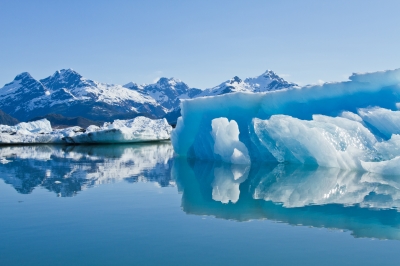Did you know that on September 12, 2012, the amount of Antarctic sea ice was found to be the highest ever recorded on day 256 of the calendar year? Sounds like great news for those concerned that human activities are warming the planet too much. So, why isn’t this record Antarctic ice growth widely reported when Arctic ice melting has been widely reported for years?
James Taylor, a contributor for Forbes, writes in “Antarctic Sea Ice Sets Another Record“:
Indeed, none of the mainstream media are covering this important story. A Google News search of the terms Antarctic, sea ice and record turns up not a single article on the Antarctic sea ice record. Amusingly, page after page of Google News results for Antarctic sea ice record show links to news articles breathlessly spreading fear and warning of calamity because Arctic sea ice recently set a 33-year low.
Interestingly, over the past 33 years of measurements, Antarctic and Arctic ice have moved opposite each other. In relative terms, when one is thick the other is thin, and vice-versa. This fact must be considered if we are to have an honest debate of the scientific evidence related to possible global warming. Taylor concludes his article with this challenge:
Sea ice around one pole is shrinking while sea ice around another pole is growing. This sure sounds like a global warming crisis to me.
Questions to ponder:
- Why isn’t this news being reported widely?
- Does Earth even have a global warming problem since one pole thins while the other thickens?
- Is science being censored in favor of one viewpoint? Is the news media biased?
- Is there any role for the federal government regarding this issue? If so, what?
Oh, one trivial (and slightly humorous) thing . . . Taylor’s article includes a picture of polar bears wrestling with the caption “Good news for polar bears is bad news for global warming alarmists.” Question: Do polar bears live in Antarctica where the ice is currently growing? If you don’t know, here’s a tip: Antarctica is the South Pole and home to penguins. So, polar bears live on the North Pole, right?
Image credit: Liz Noffsinger


